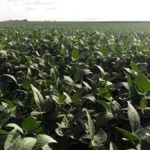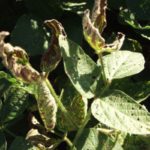A year of extremes and wild fluctuations in moisture and temperature appear to have produced a very good soybean crop in much of the province, say experts. Why it matters: […] Read more
Tag Archives soybean cyst nematode

Why soys look so good in year of extremes
Dry conditions, then lots of rain and heat have been great for growing soybeans

Edible beans and the soybean cyst nematode
Some varieties of edible beans are highly susceptible to SCN — Ontario researchers are working to figure out why
The nematode’s resilience and prevalence in all of Ontario’s major soybean-producing areas makes managing the pest a challenge, though not impossible. Farmers growing edible beans under processing contracts can keep […] Read more

First soy seed treatment cleared against SDS
A Bayer CropScience fungicide is being pressed into service against sudden death syndrome (SDS) in Canadian soybeans. Bayer on Monday launched a new soybean seed treatment dubbed ILeVO, a suspension […] Read more
